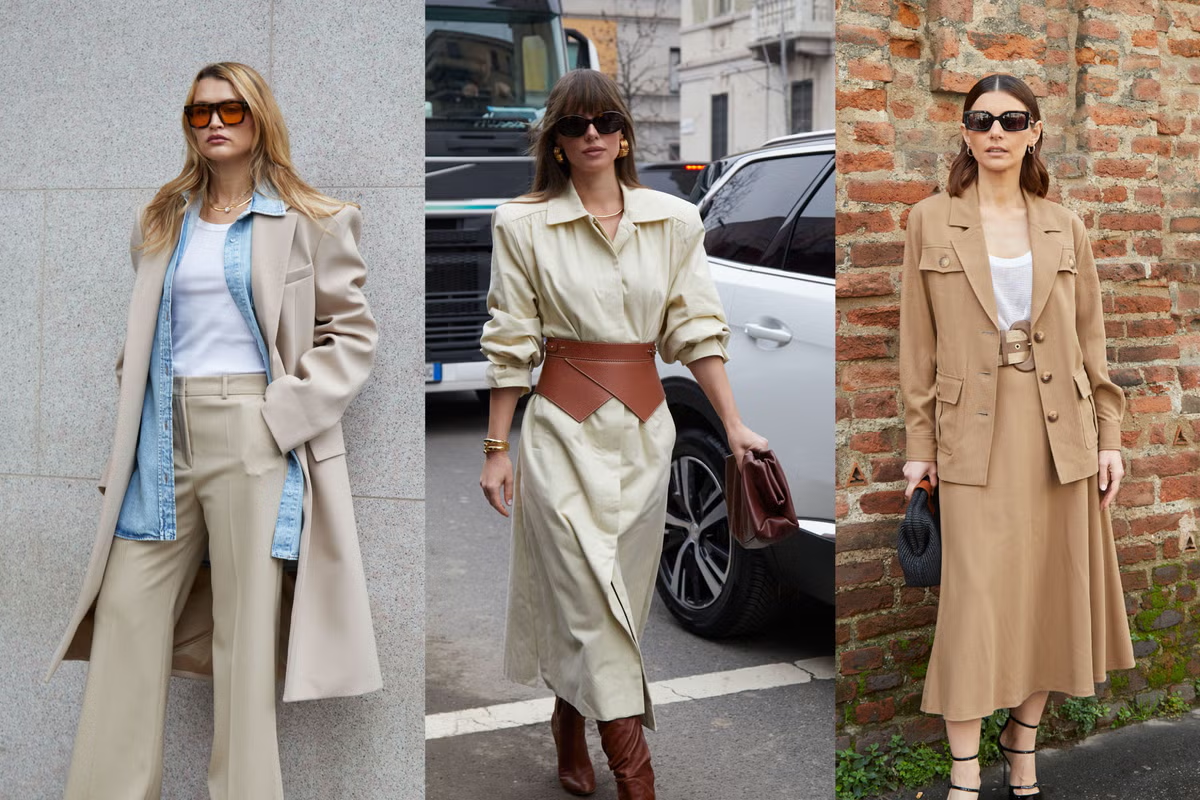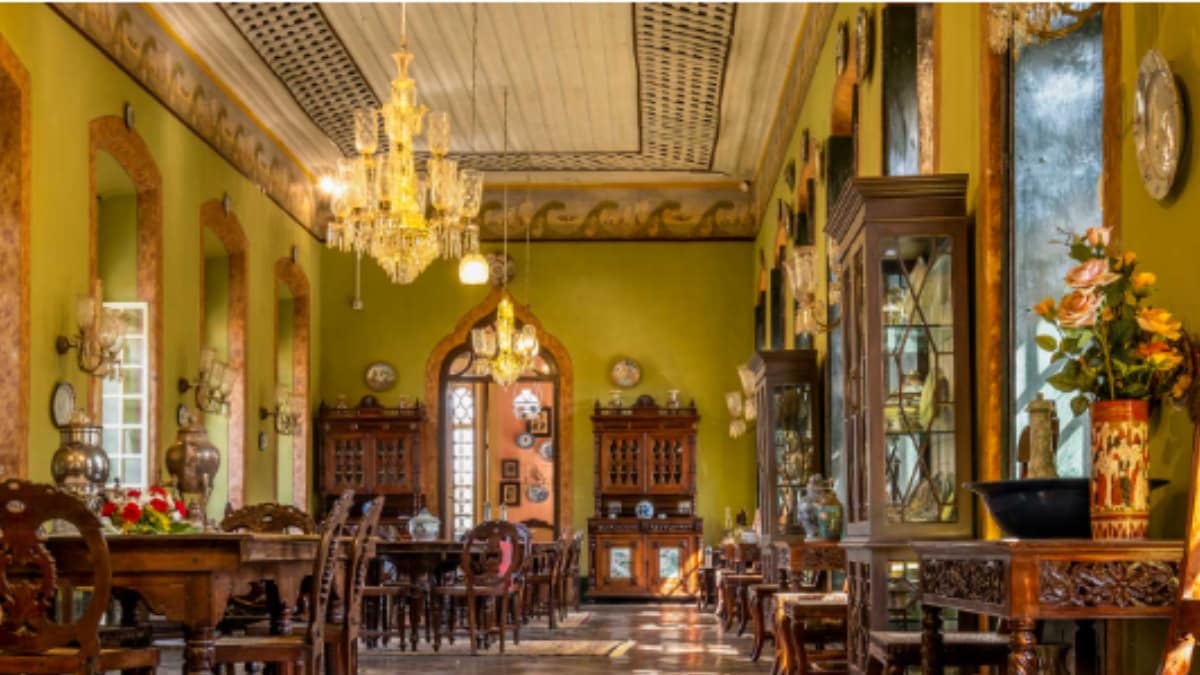The recent rise of color analysis on social media, showing people “doing their colors,” has begun to dominate conversations about personal style and capsule wardrobes.
Whether you have a “spring” or “winter,” “warm” or “cool” undertone, the debate over which shades of green or blue suit which undertones continues, but a more pertinent question deserves equal attention: which neutral tones really flatter you?
Neutrals may go unnoticed in trend roundups, but they're hardly insignificant when it comes to wardrobe workhorses.
As designer and podcaster Amanda Wakeley OBE says, “neutrals are the quiet heroes of every wardrobe.” She believes that “finding the right ones for your skin tone is as important as discovering your most flattering colors.”
When chosen well, “they become the foundation of your style: pieces that you reach for again and again because they make you feel confident and comfortable.”
So, here's an expert guide on how to find the perfect neutrals for you.
The nuances and the 'shine test'
Decoding whether your skin adapts to warm or cool neutrals can seem like an impossible test until you realize that it's often more instinctive than scientific.
Logic only gets you so far, says personal stylist Deborah Sheridan-Taylor, who advises taking things off. “Remove all makeup and use natural light.
“Hold the garment directly under your chin: if it makes your skin look bright and healthy, it's in your zone; too tired or sallow, it's not.
“You're looking for that 'lifting moment' of instant glow, where your face comes to life, rather than recedes. Again, this is much more determined by a feeling.”
Wakeley advises looking beyond skin tone, noting, “Your hair color will also be a factor, especially if you dye your hair.”
She suggests some clues. “If you burn easily, you're probably cooler-toned, and if you tan easily, you're more likely to be warmer-toned.”
Even eye color can play a role: “blue or green eyes are often associated with cooler undertones, while browns and hazel can be associated with warmer undertones.”
But one of the easiest ways to check it is through jewelry. “If you tend to shine in gold, you're probably better off with warmer tones like camel and ivory. If silver flatters you more, cool neutrals like dove gray, charcoal, or crisp white are usually your allies.”
But Wakeley warns against being too rigid: sometimes it's about how you feel about a shadow, not just how it reads.
H&M Heather Gray Jumper, £22.99
M&S Crew Neck Pocket Detail Cardigan, £36
Tone matching the complexion
Once you know your tone or season, knowing exactly which neutrals to choose is the next tricky task.
Wakeley believes that “for fair skin tones, soft greys, taupes and blush neutrals feel wonderfully refined.”
Olive complexions, she says, “come to life in creamy ivories, warm caramels and khakis,” while “deeper complexions look extraordinary in rich espresso, sand or luminous white.”
White is actually the trickiest neutral of all. “Optical white is a bright pure white, with a slightly bluish tone that makes it appear even brighter against the skin,” says Sheridan-Taylor, “while a true off-white has a yellowish or warmer ivory-like tint.”
So, if you have a cooler undertone or are wearing silver jewelry, opt for a pure white. But if you wear gold jewelry or have a warmer tone, opt for an ivory white, which will flatter your skin tone more.
Boden Elsa Smoked Yoke Knitted Shirt, £44.25 (was £59)
Sweaty Betty Essential Sculpt Long Sleeve Top, £28 (was £40)
When beige betrays you
While every beige, brown, or taupe color can turn into a blue one, they are certainly not all created equal.
An inappropriate beige can cause discomfort and detract from the warmth of the face. Texture, Wakeley insists, can be transformative. “If beige seems too flat for you, try warmer oatmeal or soft cookie tones.”
The same goes for gray, she notes, “if grays wear you out, opt for a smoky mushroom or a soft stone tone, something with a warm edge. Even adding texture—a boucle, silk, or cashmere finish—can transform the way a neutral plays with the skin.”
If you're not into classic neutrals of browns, grays and whites, Sheridan-Taylor says there are some shades that are unrecognized neutrals.
“Khaki is a wonderful neutral alternative. […] The Navy is the unsung hero of the neutral family. [and] Maroon and clay are also wonderful neutral tones, adaptable to any combination you pair them with.”
A&F Carrie Wool Blend Trench Coat, £180
& Other Stories Draped Asymmetrical T-shirt, £37
M&S Pure Cotton Horseshoe Trousers, £40
Stradivarius soft leather slippers, £39.99
The new neutrals
You might think of neutrals as timeless shades that come back year after year, but like khaki, navy, and maroon, Sheridan-Taylor points out that there are some shades that become trending neutrals.
If you've been keeping an eye on the catwalks (or even the high streets) lately, you'll have noticed that brown is the new black.
Wakeley says chocolate brown is “definitely a new neutral,” calling it “surprisingly flattering on a wide range of skin tones.”
“It pairs beautifully with soft blushes and pale blues, as well as pops of stronger colors like lipstick red and moss green.”
If you still want to stick with your trusty beiges, grays and whites but want to update them, Sheridan-Taylor says that “a neutral is just a neutral until it becomes a pure neutral.”
Transparency, he says, transforms the classics into something modern. “A sheer beige skirt, paired with an oversized gray cashmere knit sweater. […] Now you are talking.”
She's even re-layering sheer fabrics over monochrome vests, evoking the grunge-inspired semi-sheer trends of the '90s.
Zara Soft Double T-Shirt, £17.99
Zara faux suede midi skirt, £35.99












